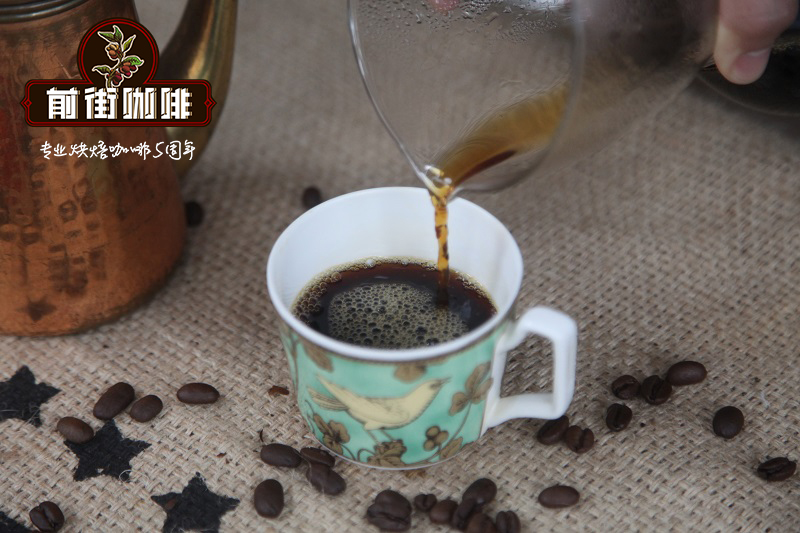Demand for Robusta coffee beans rises sharply. Robusta coffee beans exported to Vietnam will innovate.

Professional coffee knowledge exchange More coffee bean information Please pay attention to coffee workshop (Weixin Official Accounts cafe_style)
Although Robusta is one of the three major coffee varieties, its chromosome number is different from Arabica, so it presents different characteristics: the same number of coffee beans have twice as much caffeine as Arabica, can adapt to lower altitudes and difficult growing environments, and has a higher survival rate than Arabica. Therefore, Robusta coffee beans have always been the most productive of the three major coffee varieties. And the main flavor is very similar to wheat tea, and the sweetness is low.
The Italians were the first to use Robusta as part of an espresso recipe to increase crema and body, and because Robusta is cheaper, the more you go south, the more you find it added. Apart from Italy, Vietnam and Malaysia are the most used countries, while in Taiwan, it is mostly used as commercial coffee.
In recent years, a lot of good quality Robusta appeared on the market, vaguely can see someone in the improvement of this variety, but also improve the way of post-production, will say so because three years ago to participate in the political university coffee club visit course, Alice herself once drank a strong Robusta coffee, this left a deep impression. Although there is still no set of rules that can score Robusta, his refinement is already a rise that cannot be ignored.
So Alice felt that she had to taste it before she could judge a good cup of coffee, rather than just talk about it.
Demand from large bakers increases
Ricardo Piedrahita, sustainability manager at Nestle Colombia, points out that "there is an increasing demand for robusta beans from large coffee roasters." About 5% of the country's annual coffee production is bought by Nestle.
The Ministry of Agriculture has an exclusive nursery near the town of Monteria, and agricultural scientists are bidding for 3,000 Robusta bean seedlings from France and Mexico.
To examine these sea-crossing seedlings, visitors must first wear blue sterile overalls and protective hats, wash their feet, and pass through three special doors to prevent insects and microorganisms from entering.
Juan Carlos Perez, a government-affiliated agriculturalist, treats these Robusta bean seedlings like his own children. He gently stroked the branches, which were marked with orange marks and numbers.
He, who comes from a coffee-growing family, says Arabica beans are good, but experimental cultivation of Robusta beans won't hurt much.
This year, the wholesale price of Robusta beans is about 87 cents a pound, while Colombia Arabica beans cost $1.39. Asia, dominated by Robusta beans, is now the fastest-growing region in global coffee sales, with consumption forecast to grow 3.1 percent this year, compared with 0.5 percent growth in Europe and 2.6 percent growth in North America.
Robusta is easy to plant and high in yield
Rabobank soft drinks analyst James Watson believes Robusta has advantages for coffee farmers that Arabica can't match, such as resistance to pests, ease of planting and high yield.
The taste of the Robusta bean is its biggest casualty, but Jorge Cuevas, chief coffee executive of Sustainable Harvest coffee importers, believes it is a sin not to fight because growers don't care for the beans as carefully as they grow Arabica. He explained that good Robusta coffee tastes dense and strong, and is often used to make espresso. He added that if Robusta walked into a bar with Arabica, the latter would quickly mingle, but the former would be "noisy, interesting and charming" and you couldn't ignore it.
Important Notice :
前街咖啡 FrontStreet Coffee has moved to new addredd:
FrontStreet Coffee Address: 315,Donghua East Road,GuangZhou
Tel:020 38364473
- Prev

Demand for Robusta coffee beans rises sharply. Robusta coffee beans exported to Vietnam will innovate.
Professional coffee knowledge exchange more coffee bean information please follow the coffee workshop (Wechat official account cafe_style) although Robusta is one of the three major varieties of coffee, but his chromosome number is different from Arabica, so the characteristics are quite different: the same number of coffee beans with twice as much caffeine as Arabica, can adapt to lower elevations and difficult growth rings
- Next

Demand for Robusta coffee beans rises sharply. Robusta coffee beans exported to Vietnam will innovate.
Professional coffee knowledge exchange more coffee bean information please follow the coffee workshop (Wechat official account cafe_style) although Robusta is one of the three major varieties of coffee, but his chromosome number is different from Arabica, so the characteristics are quite different: the same number of coffee beans with twice as much caffeine as Arabica, can adapt to lower elevations and difficult growth rings
Related
- Detailed explanation of Jadeite planting Land in Panamanian Jadeite Manor introduction to the grading system of Jadeite competitive bidding, Red bid, Green bid and Rose Summer
- Story of Coffee planting in Brenka region of Costa Rica Stonehenge Manor anaerobic heavy honey treatment of flavor mouth
- What's on the barrel of Blue Mountain Coffee beans?
- Can American coffee also pull flowers? How to use hot American style to pull out a good-looking pattern?
- Can you make a cold extract with coffee beans? What is the right proportion for cold-extracted coffee formula?
- Indonesian PWN Gold Mandrine Coffee Origin Features Flavor How to Chong? Mandolin coffee is American.
- A brief introduction to the flavor characteristics of Brazilian yellow bourbon coffee beans
- What is the effect of different water quality on the flavor of cold-extracted coffee? What kind of water is best for brewing coffee?
- Why do you think of Rose Summer whenever you mention Panamanian coffee?
- Introduction to the characteristics of authentic blue mountain coffee bean producing areas? What is the CIB Coffee Authority in Jamaica?

